Northern California’s Coast Range
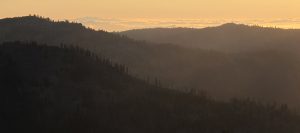
Mount Linn–also called South Yolla Bolly Mountain–is the highest point in the Coast Range of northern California. It is located to the west of Corning but the area might as well be a world away from the population centers of the state; it is rarely noticed by travelers as they drive Interstate 5. Once off the interstate, scenic forest service roads still take nearly 2 hours to wind to the trailhead. I revisited this fine mountain in July of 2016 to set up a photo-monitoring plot along the Bigfoot Trail and took the time to also map the vegetation on the mountain–particularly the grove of foxtail pines near the summit. This is one of the smallest (12 acres) and most isolated groves for the entire species and one that I am very much concerned about due to climate change. Shasta firs are encroaching upon the trees as snowpack declines and temperatures warm. I was happy to see the trees doing well and many young foxtails sprouting up–just not as many as there are young firs.
Forest Vegetation of Mount Linn
Below is a map showing the forest alliances in the upper elevations of the mountain, generally above 7,000′. The darkest green on the eastern part of the ridge is the 12 acre foxtail pine grove, that will be discussed in more detail later in the blog.
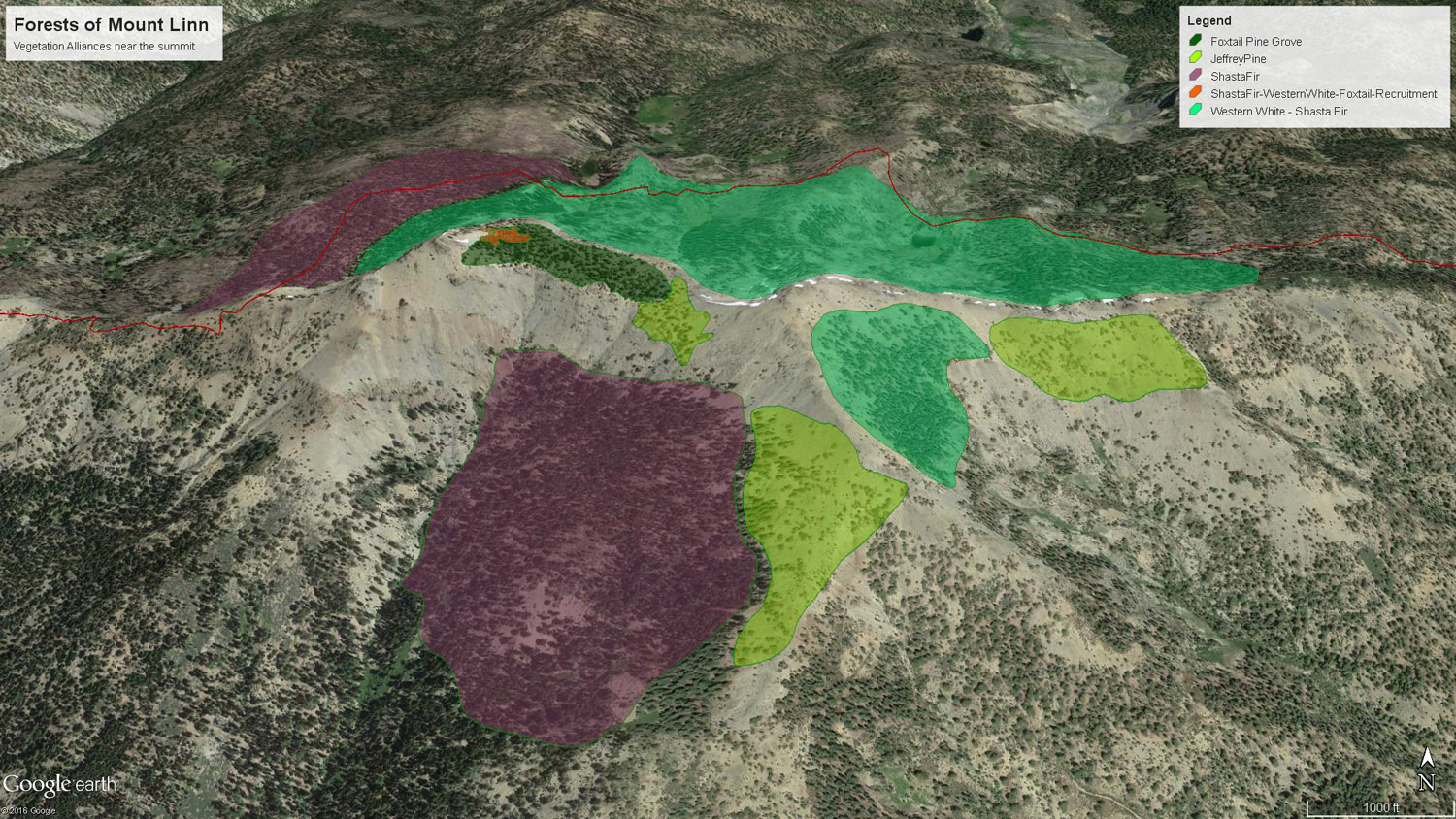
Shasta Fir Alliance
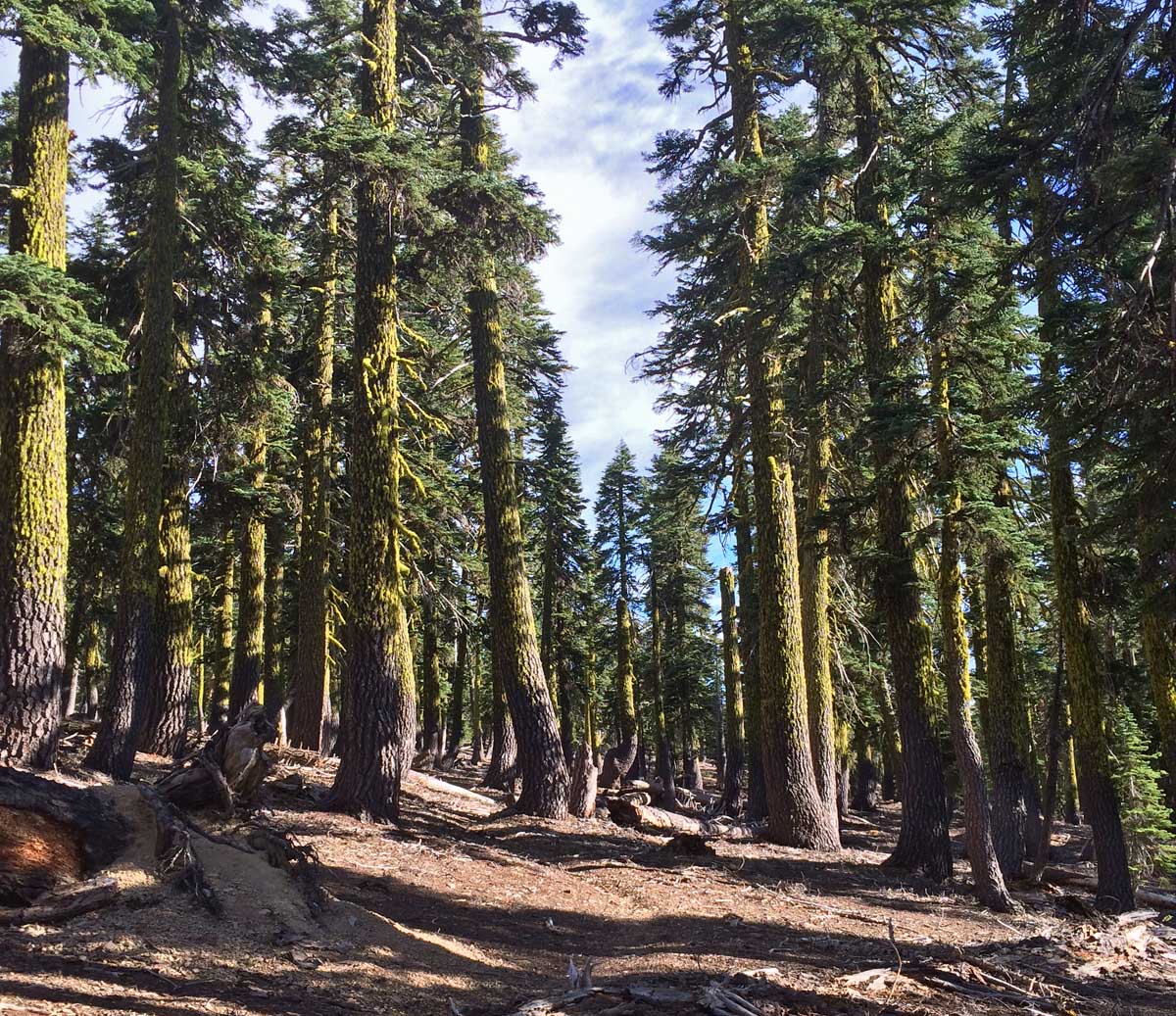
Western White Pine – Shasta Fir Alliance
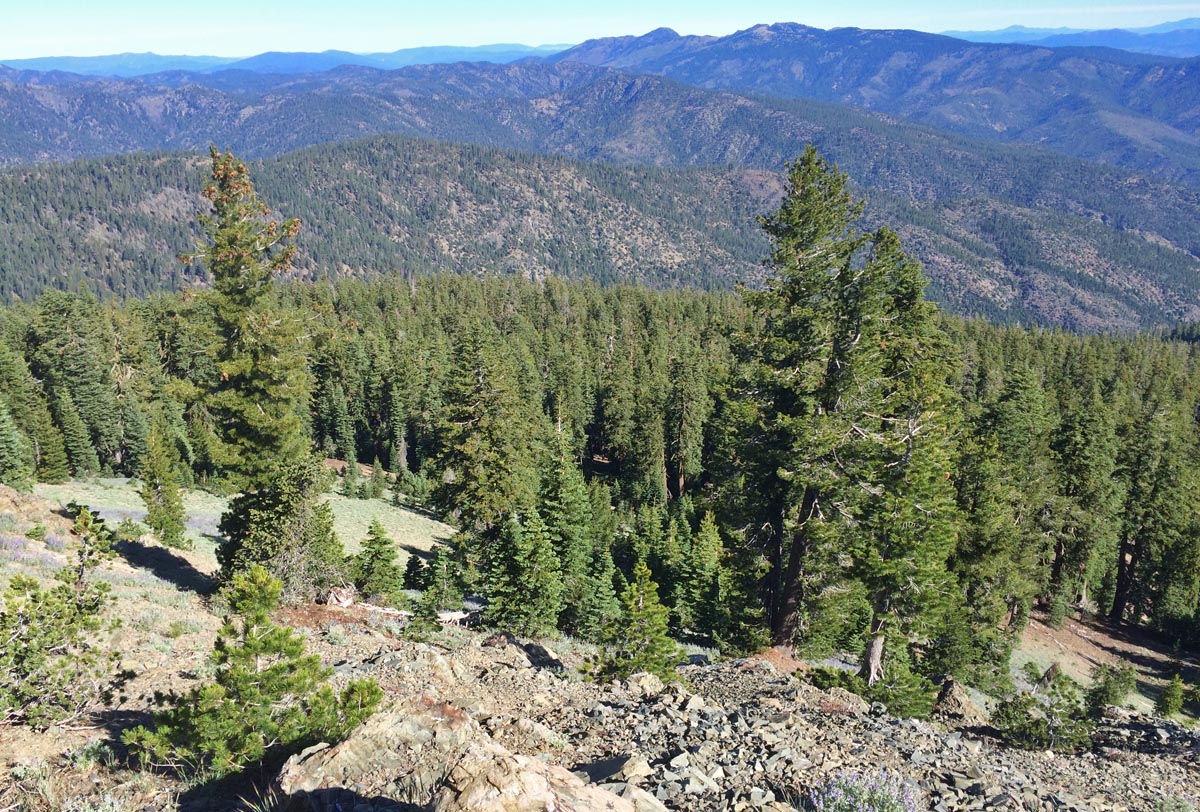
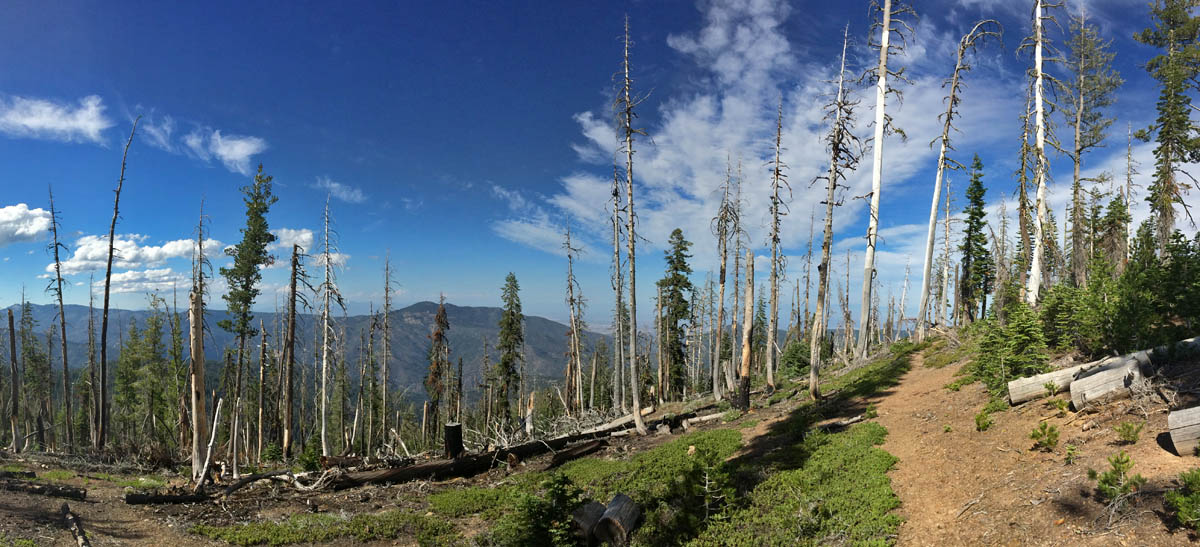
Jeffrey Pine Alliance
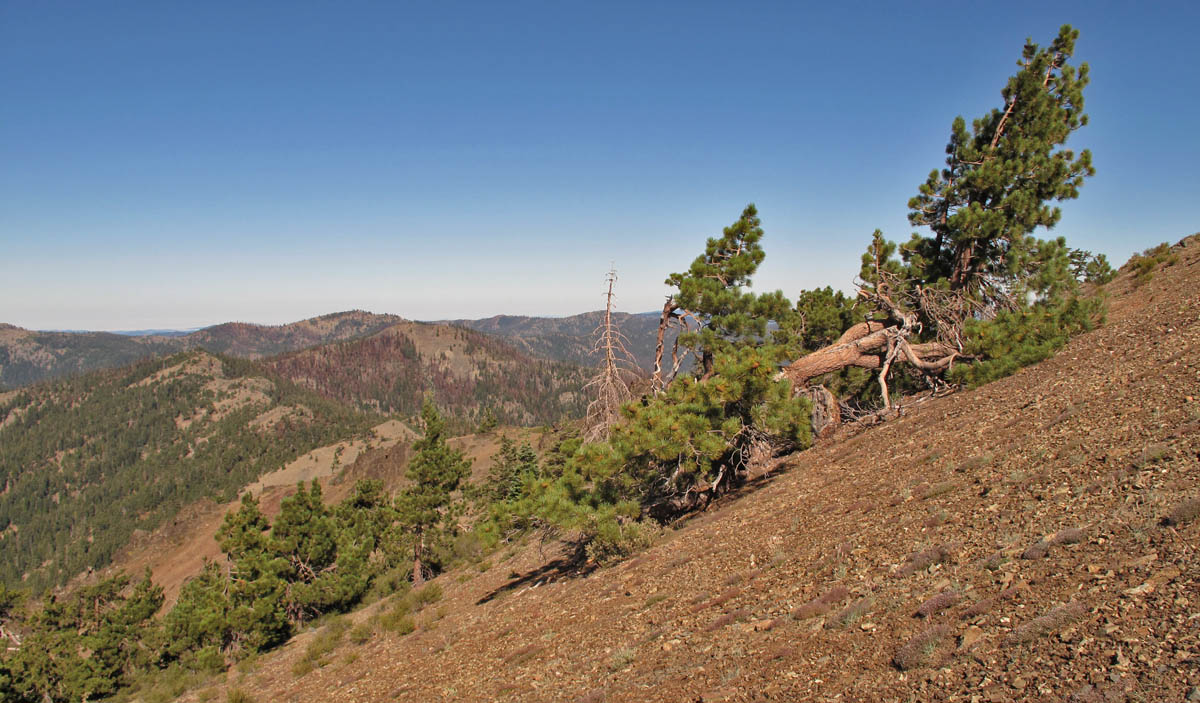
Status of the 12 acre Foxtail Pine grove – Foxtail Pine Alliance




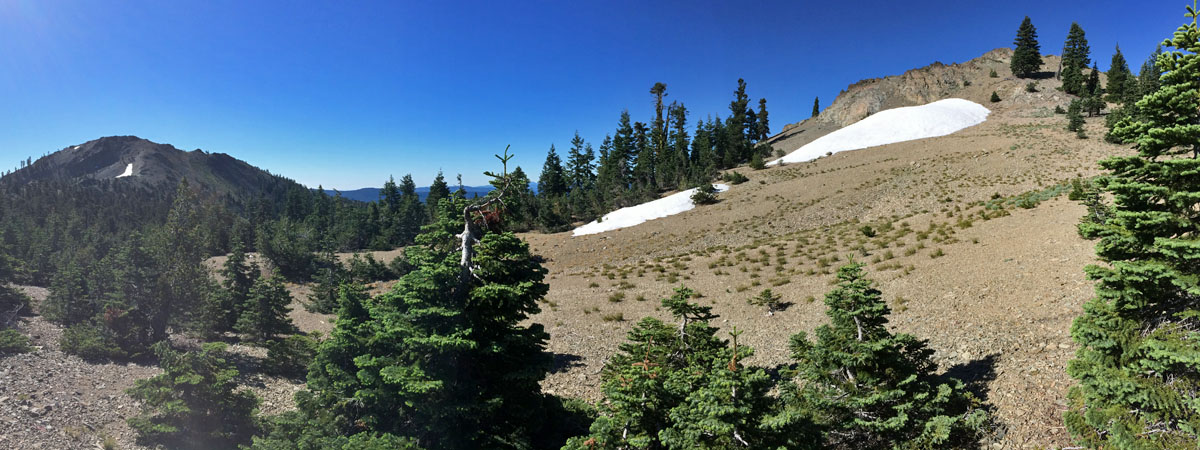

Selected herbaceous plants
Other Resources
- eBird Checklist
- My August 2009 visit
- Bigfoot Trail photo-monitoring project in the Yolla Bolly-Middle Eel Wilderness
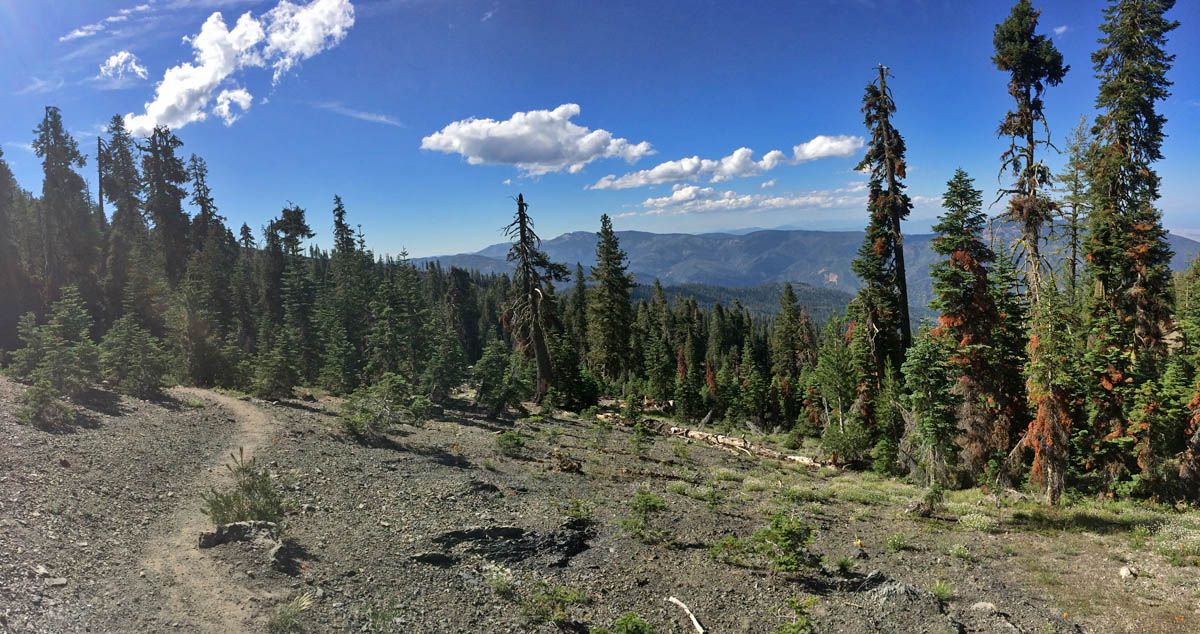
Thanks for the intrepid blog detailing the Foxtail Pines on Mt Linn…..looks like an amazing area and I am sure you had the S Yolla Bolly’s to your self! I admire your passion for seeking out the wonders of the conifer world in the Klamath Mts. Based on your conifer book we are looking forward to a hike to Cook and Green Pass later this month.
Matthew- thanks for the comment, it is a real special place for sure. Enjoy Cook and Green — there are great hikes along the PCT in either direction.
Great photos! I spent some time in the Yolla Bollas doing Forest Inventory and Analysis Plots in the early 2000s (East-West Forestry) and never saw another soul the whole time. Beautiful, yet one of the generally underappreciated Wilderness areas in northern California. I imagine it gets quite a bit of visitors during hunting season but that’s probably it.
Small world: just inspected Tom Gaman and Ron Arnett’s FIA certification plots on the Lassen over the past couple of weeks. Laura and I found one FIA plot along the Kingsley Lake Trail on the south-facing side.
I was up on Mount Linn Memorial Day Weekend this year to see this stand of foxtail pines specifically and to locate the western junipers on the western flanks of Solomon Peak. This stand is quite the relic and was quite the experience for myself and cohort Laura. There was still a lot of snow on the ground so the red fir seedlings were not really apparent. The mature foxtails looked to be in good shape despite the on-going drought which was encouraging. While dropping down to the Foxtail Saddle from Mount Linn, I noticed one tree growing in the rocky crags of the summit on the northwest aspect; it looked to be a whitebark pine and I am wondering if you noticed it yourself? Griffin & Critchfield’s excellent paper (PSW – 82/1972) doesn’t have an ‘X’ for P. albicaulis for that part of the map and CalFlora doesn’t either: perhaps an opportunity to confirm and expand the range of a California conifer? It may have been a P. monticola…seems I need to get back out there sooner than later.
Hi Rodney- thanks for sharing your observations. I do think the tree you are referring to is Pinus monticola.
I worked with Tom and Ron for close to 5 years. I really enjoyed it and got to see all of California’s National Forests minus two or three (eastside sierras). Everything from the Cleveland in San Diego to the Klamath just south of Mt Ashland. Tom and Ron are both great guys.
With the August Complex fire burning, I wonder if the 12 acre grove of foxtail pines will still be there. In the last few years, much of the diverse forests of the klamath mountains have seen fire events. The Siskiyou Wilderness, Bear Basin botanical area, the northern portion of the Marble Mountain Wilderness, portions of the Russian Wilderness…I hope a survey of these diverse conifer areas will find that most, if not all of the species found there survived the fires.